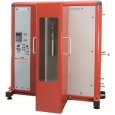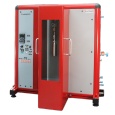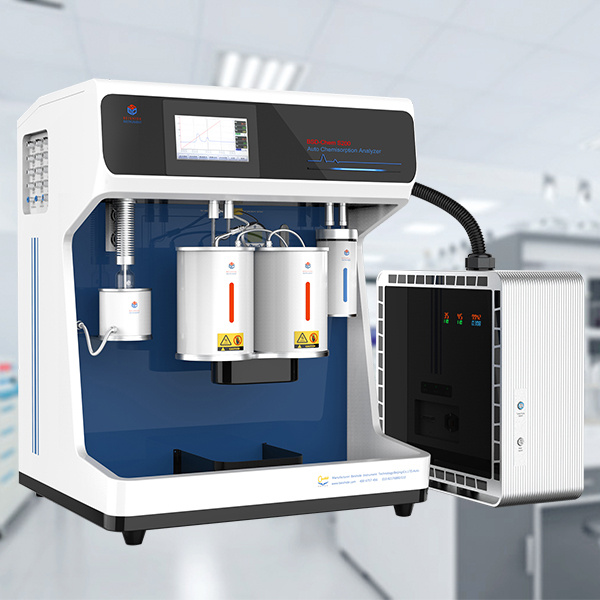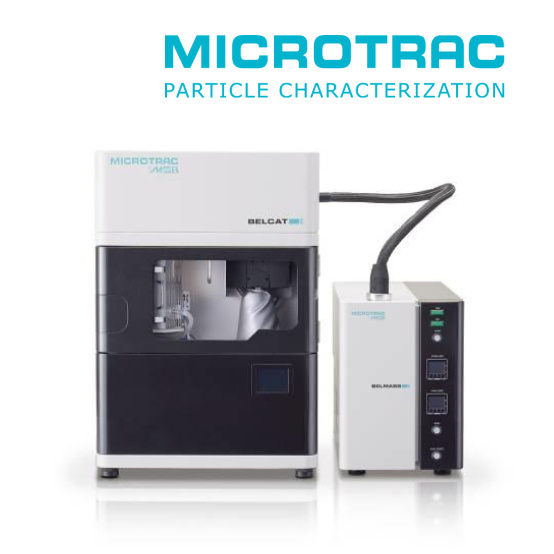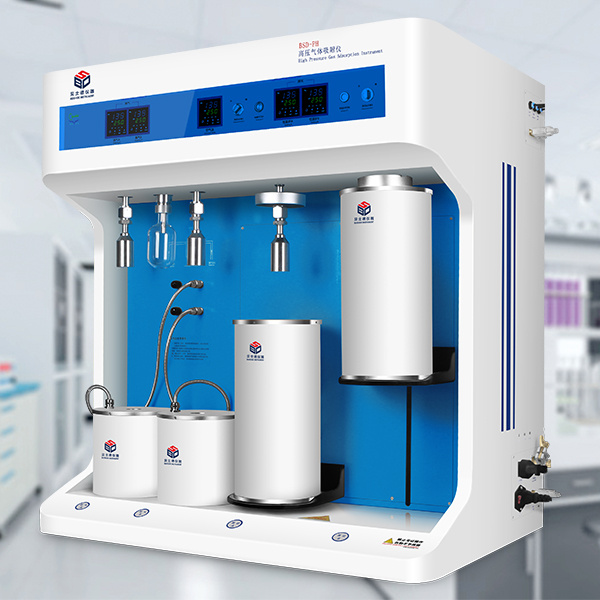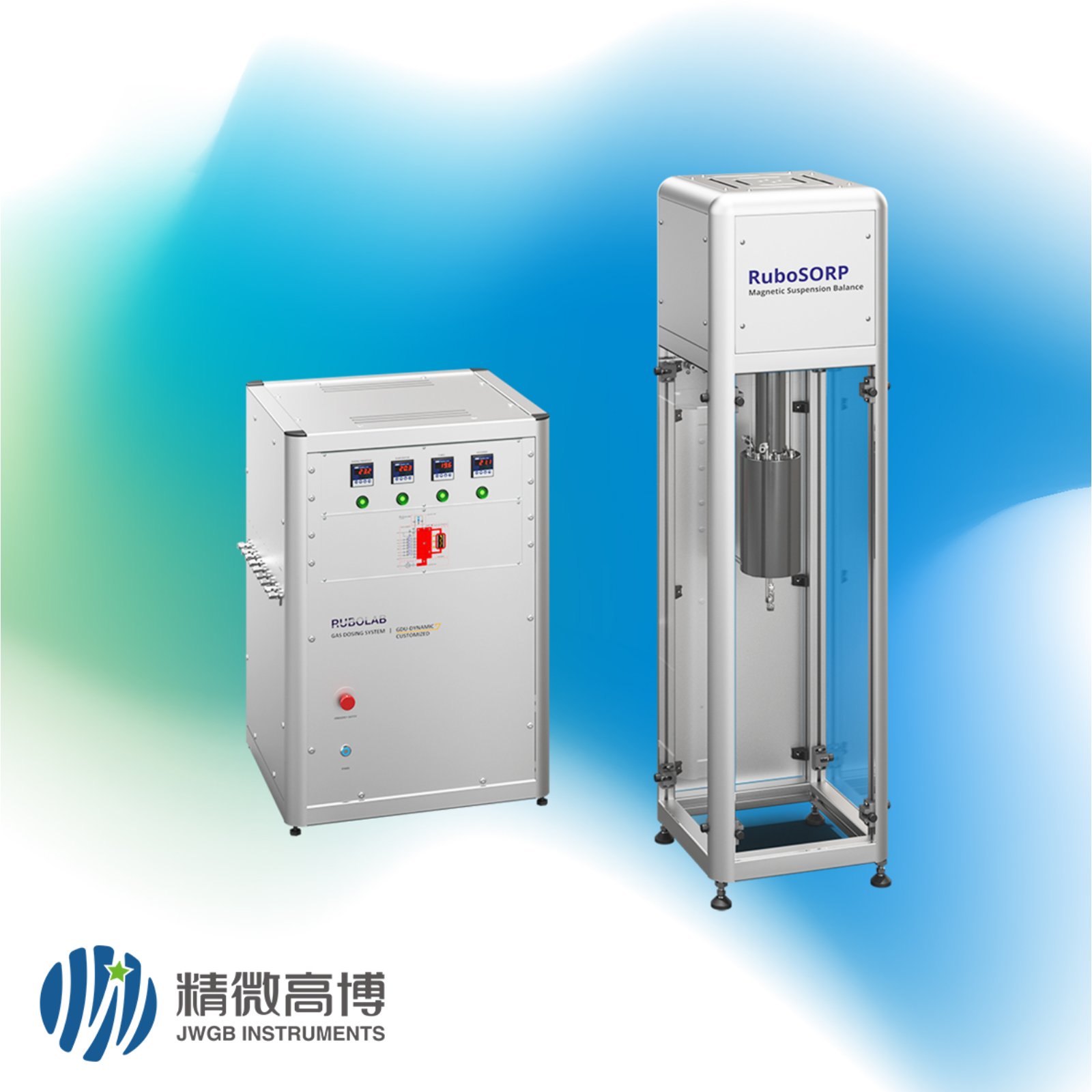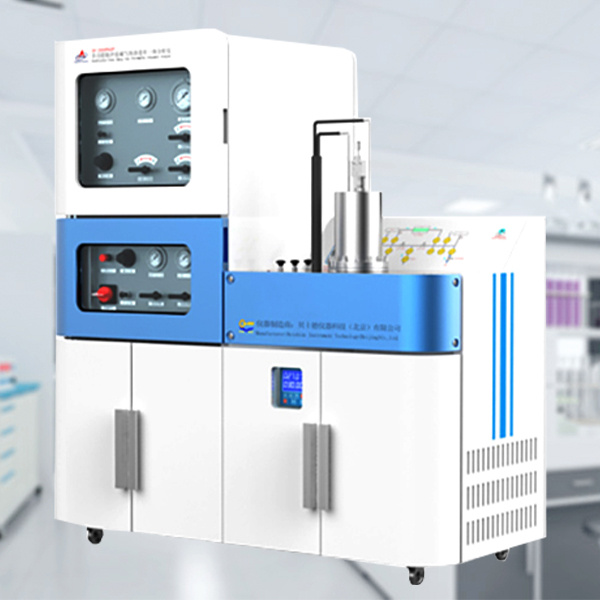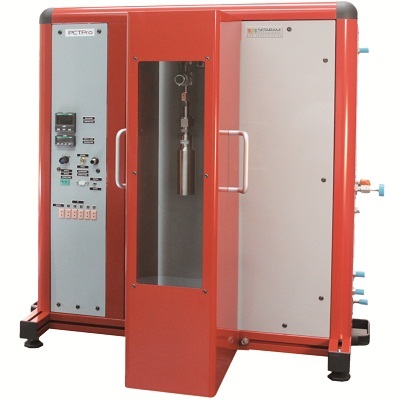
方案详情
文
储氢载锌空心玻璃微球(HGMs)的制备
目前氢经济的施行最大挑战在于在环境条件下纯氢的生产和材料的存储、控制与释放。
氢以其丰富的储藏量,高能量密度和清洁的废气可作为一种很有前途的备选能源,来满足当前全球化石燃料的枯竭和温室气体排放的挑战。
中空玻璃微球(高梯度磁分离)储氢技术正在全球进行广泛研究中,
但对于如何选择正确的储氢材料人们还在进行探索。由于材料的一些其他特性,如中空玻璃微球的低热导率等,限制了氢气的存储容量。在此基础上,我们试图通过在材料中掺杂氧化锌来提高热导率。在制备球状体的过程中,浸渍的醋酸锌与琥珀色的玻璃粉末的分别以0到10的重量百分比混合。制作好中空玻璃微球样品利用场发射扫描电子显微镜(FE-SEM)、环境扫描电镜、高分辨率透射电子显微镜(HRTEM)、傅里叶变换红外光谱和x射线衍射(XRD)技术及FE-SEM、XRD技术进行检测。在微球壁沉积的氧化锌使用FE-SEM观察,并使用ESEM和TEM的进一步证实XRD和紫外可见光谱数据。研究发现这些样品5小时内,200°C和10bar的压力条件下,样品中的锌的百分比从0增加到2%的过程中,储氢含量不断增加;当锌的比例超出2%时,储氢能力不断下降。这是由于氧化锌纳米晶体沉积在微球表面上关闭了纳米孔,因此减少了储氢容量。玻璃酸锌(HAZn2)的储氢能力在200℃、10-bar压力、3.26 %的重量比的条件下被发现。
方案详情

Fabrication of Zinc-Loaded Hollow Glass Microsphere’s (HGMs) forhydrogen storage The greatest challenge for a feasible hydrogen economy lies on the production of pure hydrogen and the materials for its storage with controlled release at ambient conditions. Hydrogen with its great abundance, high energy density and clean exhaust is a promising candidate to meet the current global challenges of fossil fuel depletion and green house gases emissions. Extensive research on hollow glass microspheres (HGMs) for hydrogen storage is being carried out world-wide, but the right material for hydrogen storage is yet underway. But many other characteristics, such as the poor thermal conductivity etc. of the HGMs, restrict the hydrogen storage capacity. In this work, we have attempted to increase the thermal conductivity of HGMs by ZnO doping. The HGMs with Zn weight percentage from 0 to 10 were prepared by flame spheroidization of amber-colored glass powder impregnated with the required amount of zinc acetate. The prepared HGMs samples were characterized using field emission-scanning electron microscope (FE-SEM), environmental SEM (ESEM), high-resolution transmission electron microscopy (HRTEM), Fourier transform infrared spectroscopy and X-ray diffraction (XRD) techniques. The deposition of ZnO on the microsphere walls was observed using FE-SEM, ESEM and HRTEM which was further confirmed using the XRD and ultraviolet–visible absorption data. The hydrogen storage studies done on these samples at 200?°C and 10-bar pressure for 5h showed that the hydrogen storage increased when the Zn percentage in the sample increased from 0 to 2%. The percentage of zinc beyond 2, in the microspheres, showed a decline in the hydrogen storage capacity. The closure of the nanopores due to the ZnO nanocrystal deposition on the microsphere surface reduced the hydrogen storage capacity. The hydrogen storage capacity of HAZn2 was found 3.26wt% for 10-bar pressure at 200°C. 储氢载锌空心玻璃微球(HGMs)的制备 目前氢经济的施行最大挑战在于在环境条件下纯氢的生产和材料的存储、控制与释放。 氢以其丰富的储藏量,高能量密度和清洁的废气可作为一种很有前途的备选能源,来满足当前全球化石燃料的枯竭和温室气体排放的挑战。 中空玻璃微球(高梯度磁分离)储氢技术正在全球进行广泛研究中, 但对于如何选择正确的储氢材料人们还在进行探索。由于材料的一些其他特性,如中空玻璃微球的低热导率等,限制了氢气的存储容量。在此基础上,我们试图通过在材料中掺杂氧化锌来提高热导率。在制备球状体的过程中,浸渍的醋酸锌与琥珀色的玻璃粉末的分别以0到10的重量百分比混合。制作好中空玻璃微球样品利用场发射扫描电子显微镜(FE-SEM)、环境扫描电镜、高分辨率透射电子显微镜(HRTEM)、傅里叶变换红外光谱和x射线衍射(XRD)技术及FE-SEM、XRD技术进行检测。在微球壁沉积的氧化锌使用FE-SEM观察,并使用ESEM和TEM的进一步证实XRD和紫外可见光谱数据。研究发现这些样品5小时内,200°C和10bar的压力条件下,样品中的锌的百分比从0增加到2%的过程中,储氢含量不断增加;当锌的比例超出2%时,储氢能力不断下降。这是由于氧化锌纳米晶体沉积在微球表面上关闭了纳米孔,因此减少了储氢容量。玻璃酸锌(HAZn2)的储氢能力在200℃、10-bar压力、3.26 %的重量比的条件下被发现。
确定
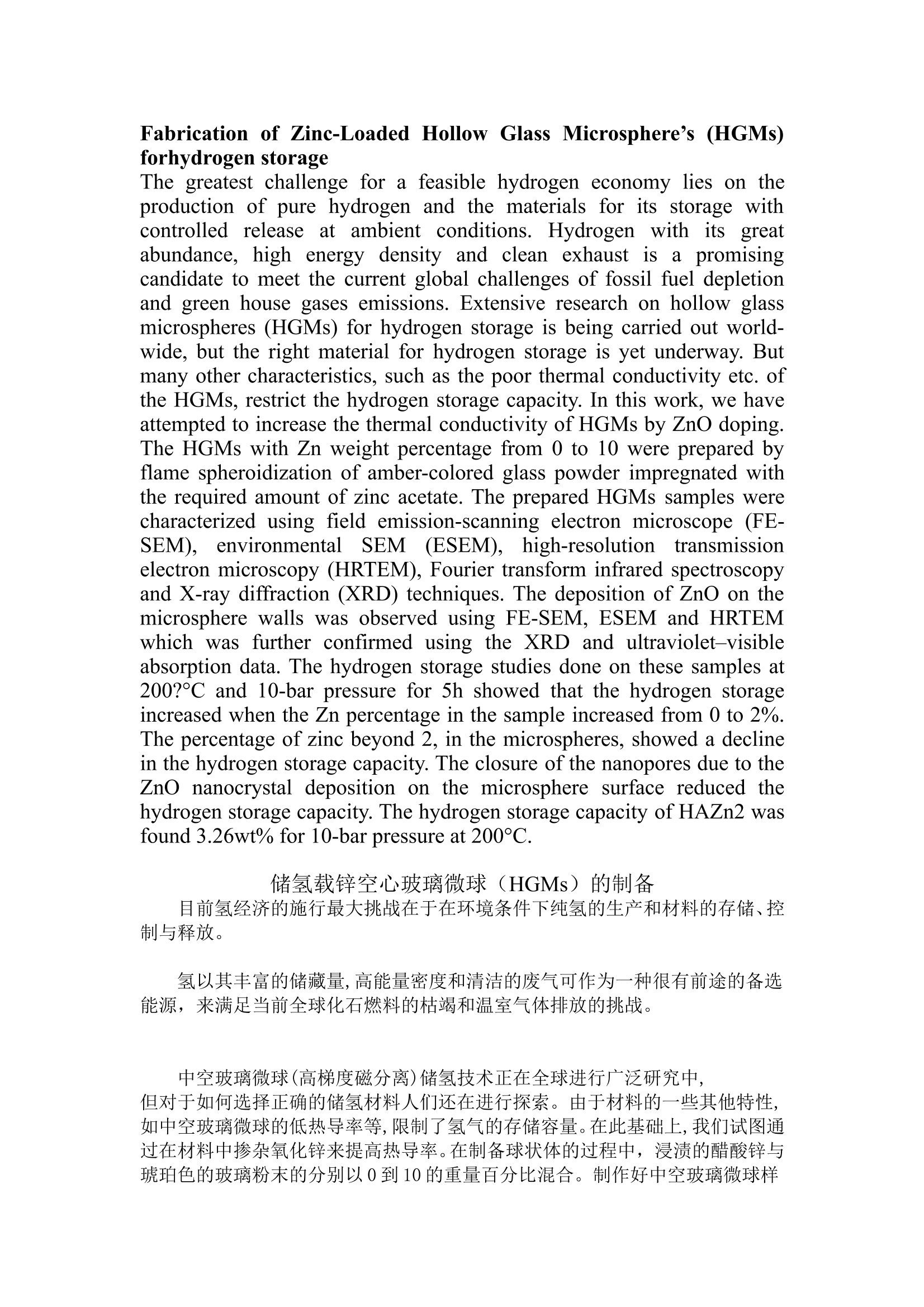
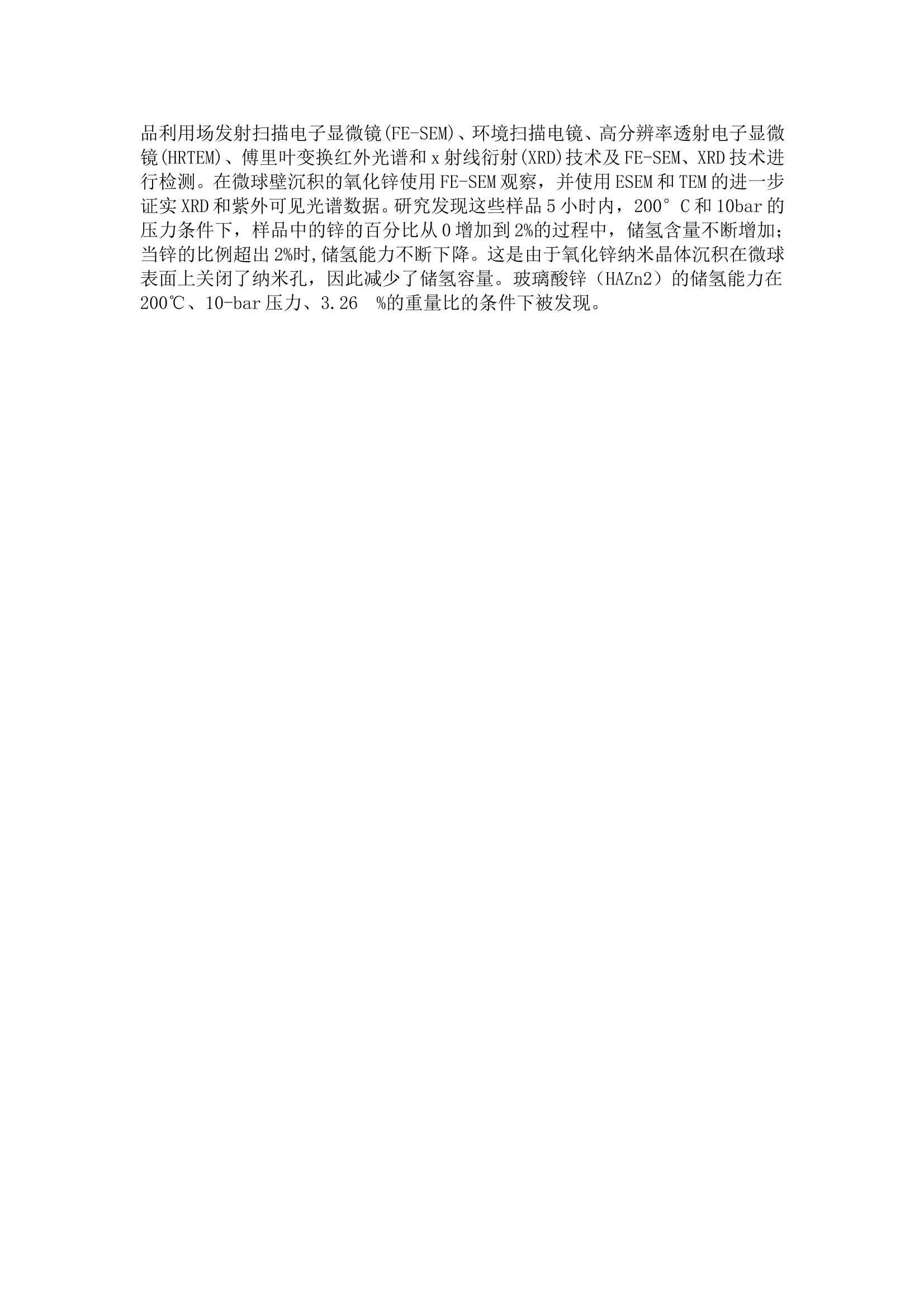
还剩1页未读,是否继续阅读?
凯璞科技(上海)有限公司为您提供《储氢载锌空心玻璃微球(HGMs)的制备》,该方案主要用于其他中--检测,参考标准--,《储氢载锌空心玻璃微球(HGMs)的制备》用到的仪器有PCTPro-Evo气体吸附测量仪、PCT Pro E&E 气体吸/脱附分析仪、法国塞塔拉姆 高压气体吸附仪 GASPRO-原PCTPro3000
推荐专场
相关方案
更多









